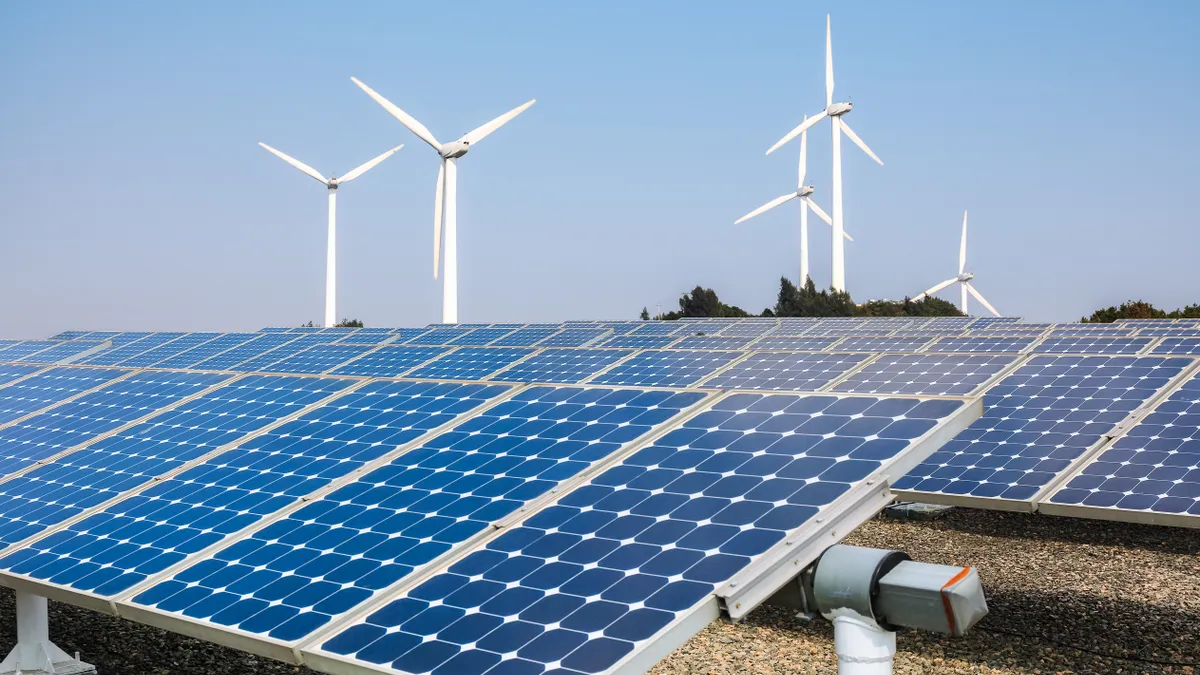Dive Brief:
- The California ISO hit a new renewable energy record this week, with wind, solar, hydro and other renewables serving nearly 42% of electricity demand on May 16, according to CAISO data.
- During peak renewables production over the 2 p.m. hour, renewables supplied nearly 72% of the ISO's electricity. Thermal generation (mostly gas-fired), unspecified power imports and nuclear power made up the balance.
- The record comes just days after the previous one on was set on Saturday, May 13, when renewables supplied 67% of the ISO's power over a one-hour period.
Dive Insight:
Flush hydro reserves and good weather for wind and solar generation are combining to allow California to source more electricity from renewables than ever before.
In less than a week, CAISO saw two records for wind and solar penetration, and on May 16 set an overall record for renewable energy generation.
The expanded renewable supply is also increasing the frequency of generation curtailments and negative pricing. Over the first three months of the year, more than 30% of the 5-minute intervals CAISO tracks for energy production had some level of curtailment. In March, average real-time electricity prices dipped below zero twice a day.
Even with that curtailment, the increased renewable generation appears to be displacing some gas-fired power, according to the EIA:
Curtailment levels are expected to decline this summer, but the underlying issue of renewable energy generation patterns remains. The burgeoning supply of solar energy at mid-day was one of the key elements behind PG&E's decision to close the Diablo Canyon nuclear plant in the middle of next decade, and two bills in the California legislature are targeting techniques to spread more renewable generation to peak demand hours.
Peak demand on May 16 for CAISO fell during the 10 p.m. hour, according to ISO data.
CAISO last week released a resource analysis that concluded the operator will have adequate resources available to handle summer 2017 demand, "but limitations on gas supply in southern California remains a concern."
"The ISO analysis does not account for gas curtailment risks associated with the gas use limitations imposed on the Aliso Canyon natural gas storage facility," the operator said. State agencies are preparing to issue a joint report on grid reliability related to the Aliso facility limitations later this month, CAISO said.
"The risks associated with the restrictions are greater in the local areas in Southern California than to the ISO system," the operator noted.
Summer peak demand is projected to be about 46,877 MW, about a 0.6% higher than 2016. About 52,785 MW of net qualifying capacity will be available this summer, CAISO said.
CAISO isn't the only ISO setting clean energy records. Earlier this year, the Southwest Power Pool set a new record for wind penetration, serving 52.1% of its load with the renewable generation at one point in February.













